Every individual has a responsibility to engage and embed in sustainable practices that will contribute to a better future for generations to come. In service operations, a large part of this responsibility involves the actions relevant to the physical service. Still, it also involves the education being passed down, intertwining its way into the children's everyday living, understanding and habits.
In this topic, we will investigate what it means to be environmentally responsible as role models and educators of young children and how we can support their development in ‘world care’.
By the end of this topic, you will understand:
- Environmental responsibility
- Environmental principles and key issues.
- Strategies to support children’s understanding and implementation of environmental responsibility
- Service- and community-wide environmental responsibility promotion, implementation, and action
- Environmental responsibility plans.
Environmental responsibility involves an organisation or company incorporating plans and actions that establish practices that preserve the environment and resources. This could include taking an environmental services pledge to shape the organisation’s philosophy, policies, and procedures; and how they review and assess the ongoing implementation, quality of the practice and areas undergoing improvement or review. Sustainability aims to use resources wisely so that they are maintained over the long term. Sustainability is the opposite of conspicuous consumption, where resources are used without care or reference for their value, renewability or future needs.
Activity 1A
Sustainability
Consider your interpretation of sustainability and answer the following questions:
- What do you feel about the concept of sustainability?
- What do you believe you could do on a large scale (around the world) and a small scale (in the home/service) to support sustainability?
Ensure that you keep notes for future reference, as this information will support your assessment and professional practice.

Sustainability
Sustainability is often discussed and implemented, but what does it mean? There are many definitions, and people have different feelings about its relevance, importance, and how to ‘be’ sustainable. Sustainability aims to meet the needs of the present without compromising the ability of future generations to meet their own needs.
Sustainability can involve all aspects of one’s life, and in a children’s service, it includes:
- thinking and acting sustainably throughout daily routines
- thoughtfully educating and engaging children in sustainable thinking, actions, and practices
- involving families and the local community in the process
- considering how your actions are impacting the planet.
Resource
To learn more about sustainability, visit the following link: We hear you - Taking an active role in the environment and promoting a sustainable future from the Australian Children’s Education and Care Quality Authority (ACECQA).
Sustainability Development
Environmental responsibility is the motivator for sustainability, a long-term goal. A company’s action and operation processes for sustainable development are the pathways and steps it can take to become sustainable.
There are different ‘pillars’ considered necessary to create sustainability.
Sometimes culture is also included as another pillar for achieving sustainable development.
Environmental responsibility and sustainability rely on action – simply talking about them will not support and build a healthier, more sustainable world. Addressing sustainability and responsibility can start with small steps, building up to bigger steps over time.
Activity 1B
Pillars of sustainability
For each of the three pillars of sustainability, write down one (1) example of an action or process a service could employ to support that pillar for the greater good of humanity.
For example, a service could move towards economic sustainability by implementing a community reusable art box for families and community members to drop off unwanted materials suitable for children’s art experiences. This simple action is a more economically sustainable way of gathering art resources and could create savings in the service’s budget, where produced and purchased products were previously used.
Ensure that you keep notes for future reference, as this information will support your assessment and professional practice.
Exploring people’s perception and treatment of the environment and observing how humans have altered the balance of nature through our lack of care can provide a starting point for educating children about sustainability. This information provides a basis to show children about environmentally responsible behaviour and practices that can be embedded in their lives for the benefit of the planet and future generations. Our children are our future world leaders and policymakers. Therefore, our children’s teachers must have the skills required to protect our world so they can be passed on knowledge.
Watch
Watch the video to learn about the United Nations Educational, Scientific and Cultural Organisation (UNESCO) and the work it does in education, science, and culture to build international cooperation and support sustainable development goals: UNESCO: The Lab of Ideas, the Lab for Change! by UNESCO 2:41 minutes.
We need to consider numerous considerations when we delve into environmental or sustainability issues. Some factors are possible to work towards in early childhood services; others are not, as the service may not have the level of control or influence required, or they may not be relevant to the service’s demographic.
Key Sustainability Issues
The following topics describe key sustainably issues and considerations:
- Global warming and climate change
- Pollution
- Overpopulation and resource depletion
- Abundance of waste
- Loss of biodiversity
- Deforestation
- Ocean acidification
- Water pollution
- Acid rain
Global warming and climate change
Global warming is the increase in global temperatures caused by the release of greenhouse gases, which trap heat. Climate change refers to the changes in the climate and weather patterns worldwide.
Watch
Watch these clips about global warming and climate change:
What Is Global Warming, Explained from National Geographic 2:49 minutes.
ResourceSmart Schools Online Teacher Learning: Climate Change Basics in Victoria by Sustainability Victoria 10:01 minutes.
Pollution

The seven main types of pollution are air, water, soil, noise, radioactive, light, and thermal. All these types are interlinked and influence each other, causing many of the adverse effects on our environment we see today, which could take millions of years to undo.
Some of the worst pollutants are industry and motor exhaust (causing air pollution); oil (in oil spills), urban waste runoff and acid rain (causing water pollution); and industrial waste (causing soil pollution).
Watch
Watch the clip to learn more about pollution:
Causes and Effects of Climate Change from National Geographic 2:49 minutes
Read the following article to learn more about water pollution: Ocean Pollution: The Dirty Facts from the Natural Resources Defence Council (NRDC).
Overpopulation and natural resource depletion
The human population of our planet is reaching an unsustainable level, where certain segments of the population are experiencing shortages of natural resources, including water, fuel, and food, due to the high demand, especially in poorer areas with a growing population.
Agriculture is needed to support the many communities of the world. farming involves clearing land that causes de-forestation and environmental damage. This destroys animal habitats and reduces trees which in turn reduces their ability to absorb carbon dioxide and release oxygen. Also farming animals cause greenhouse gasses to be produced that affect global warming. Farming also leads to pollution through utilising fertilisers, pesticides, and insecticides. In addition high populations mean more cars and industry and that increased carbon emissions.
Human activity is threatening animals by removing their habitat and polluting their environments, so species are becoming extinct and reducing biodiversity.
Abundance of waste
The amount of waste pollution in water is at a catastrophic level. Overconsumption of things like plastic threatens the environment, with nonbiodegradable waste ending up in landfills and bodies of water.
There are many schemes in place to minimise waste, especially hazardous waste. Generally, less than 10% of all plastic waste produced is recycled.
Watch
Watch the clip to learn about why we waste so much: ResourceSmart Schools Online Teacher Learning: Why We Waste by Sustainability Victoria 15:39 minutes
Loss of biodiversity
The extinction of species and habitats equals biodiversity loss; destroyed ecosystems threaten many species. For example, habitat loss, pesticide use, and climate change have led to a decline in bees available to pollinate food crops, which is a major concern for animals and humans alike. Biodiversity conservation aims to preserve and protect the animals, plants and micro-organisms that make up an environment.
Watch
Watch the clip to learn more about biodiversity: What on Earth Is Biodiversity? by Conservation International 3:45 minutes
Deforestation
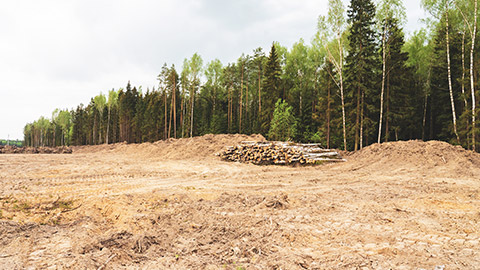
Deforestation is clearing trees to make the land available for residential, industrial, or commercial purposes. Having their habitats and protection disappear causes issues for many species of animals. Humans also suffer because trees act as air cleansers, so fewer trees mean lower air quality.
Ocean acidification
Humans are estimated to cause around 25% of atmospheric carbon dioxide (CO2). As a direct impact of excessive CO2 production, ocean acidity has increased dramatically. By 2100, it may have increased by as much as 150%, impacting all sea life but predominately shellfish and plankton.
Water pollution
Water pollution is when water quality in a body of water is degraded by harmful substances (often chemicals or microorganisms), rendering it toxic to humans or the environment.
Resource
Read more about the various types of water pollution at the following links: Water Pollution: Everything You Need to Know from the NRDC.
Watch
Watch the video to learn about water pollution.
Causes and Effects of Water Pollution – Sustainability by Acciona 1:16 minutes
Acid rain
When pollutants in the atmosphere, such as sulphur dioxide and nitrogen oxide (the waste gases from burning fossil fuels), turn to rain, they contaminate and cause harm to communities and the environment, including wildlife. Acid rain will also contaminate bodies of water, harming aquatic species and polluting water supplies.
Watch
Watch the animation video to learn more about acid rain: Acid Rain by Kinetic School 4.50 minutes
Watch the video on the sad truth about the impact of mankind on the planet: Man by Steve Cutts 3:36 minutes.
Environmental Principles
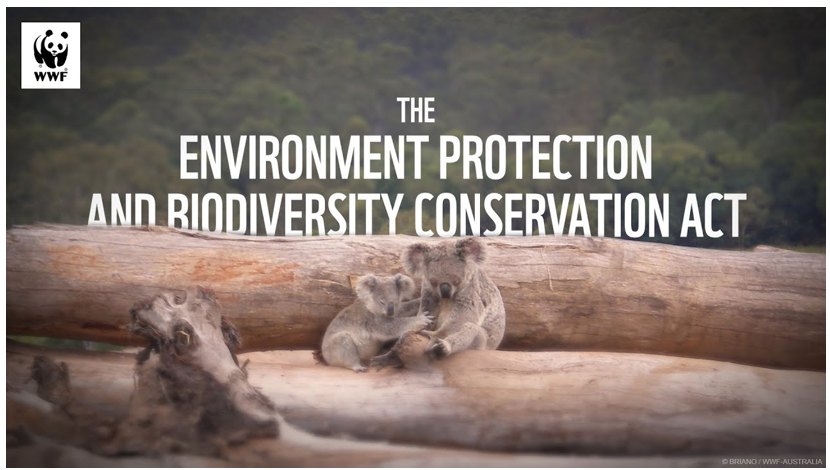
Image sourced from WWF, 2020.
Australia’s key environmental law is the Environment Protection and Biodiversity Conservation Act 1999. The federal government jointly administers environmental protection with the state and territory governments and local governments. The federal government controls the assessment and approval of matters that impact national environmental and cultural concerns. At the same time, the state and territory governments have their own environmental protection legislation, which applies to specific business activities and their environmental impact.
The Act aims to provide a legal framework to ensure the environment is protected and supports the country’s economic and social needs.
Based on the Act, there are environmental principles that can be identified to guide early childhood services.
| Principle | Explanation | Example Consideration for Early Childhood Services |
|---|---|---|
| Ecological integrity and maintaining biological diversity |
Conservation of biological diversity and ecological integrity should be a fundamental consideration. This includes protecting all life forms: plants, animals, and micro-organisms, and understanding their place in their ecosystem. |
A service should do what it can to protect outdoor areas from the children. Do not allow children to pick flowers, purposefully stand on plants, or capture or kill insects. |
| Integrating environmental, social, and economic considerations into decision-making | Environmental factors should be included in the valuation of assets and services, including those generating pollution and waste. Environmental goals, having been established, should be pursued in the most cost-effective way. | Services will need to assess how their environmentally conscious actions will impact their finances, both in the short term and long-term (such as the short-term high cost of buying high-quality natural materials versus buying cheap plastic items or the short-term cost of building a vegetable patch versus the savings in food purchasing in the future), and how role modelling sustainability may impact on the surrounding community. |
| Precautionary behaviour | Risk assessments should be implemented to examine the impact of practices and whether they could cause serious or irreversible damage. Businesses or organisations cannot state that ‘lack of evidence’ is the reason not to alter measures that put the environment at risk. | If a service decides to minimise its chemical use but cannot find a base of empirical research available to support the need to do so, it should still attempt to try. It is well understood that many chemicals are hazardous and, therefore, likely damaging to the environment. This common-sense reasoning should be enough to implement measures to reduce chemical use. |
| Equity for each generation and between generations | Today’s generations must ensure the health and well-being of the planet for the benefit of future generations and their quality of life. | All decisions should reflect the concept of ‘sustainability’, meaning they should look to protect the environment for generations to come. For example, teaching children not to waste water will mean future generations should have better access to usable water. |
| Waste minimisation | All reasonable and practicable measures should be taken to minimise waste generation and its discharge into the environment. |
A service may serve smaller portions of meals to children (with seconds available if needed) to minimise food wastage. A service may also consider reducing such things as water waste and waste from play resources. |
| Democracy and governance | The process of informing participation and maintaining transparency with communities in situations with potential environmental impact. | A service may inform families that they are implementing a no-chemicals approach to service practices, which may cause some families to question how the service will maintain hygiene safety. A service must be prepared with research to back up the safety of its practices while maintaining a collaborative relationship with families and allowing information transparency. |
| Involving the community | Collaboration and involvement of communities in environmental efforts work towards long-term goals for sustainability. | A service may implement a community approach to its food menus and use more seasonal foods. Recipes to support the menus could be collected by engaging families and service gardens for growing food, and local food suppliers could be used to minimise the eco-footprint of the service. |
| Continual improvement | Continual improvement is required for sustainability processes, including containing and minimising the impacts of waste and environmental pollutants. | Services should include environmental responsibility and sustainability in their quality improvement plan (QIP), demonstrating their short- and long-term goals for improvement. |
| Emissions | Companies need to take action to identify and minimise the production of greenhouse gases. | A service could assess local suppliers for all products (minimising transport logistics), reuse items and install power-saving strategies (solar systems, timers for lights, natural lighting, etc.). |
| Consumption | Organisations should identify their overconsumption of the world’s resources and promote efficient and sustainable use of energy, water, paper, and other resources. | A service could start to minimise its food servings to reduce food wastage, use food wastage for a worm farm or compost, find reusable alternates to single-use products, implement strategies to minimise paper and material use, or carefully select only relevant toy resources with long life spans. |
| Transport | Companies should be aware and identify the overuse of non-sustainable transport and look for more alternatives where possible. |
A service could use local or ‘home-grown’ services to minimise the impact of logistics. It may implement the use of public transport for excursions instead of using privately hired buses. |
| Infrastructure | It is important to ensure sustainability principles are compliantly implemented by building any infrastructure. | All changes to a service should be considered through a sustainability lens. Services need to assess how they currently operate to make improvements to infrastructure (e.g., improvements to the water supply of the building, increased use of natural lighting instead of electric lights, eco- products implemented wherever practical). |
| Compliance | Organisations must comply with all environmental legislation, regulations, and policies. | Services must remain in line with environmental legislation and frameworks supplied by the local, state/territory and national governments. International environmental law will also apply where relevant if it does not conflict with local guidance. |
| Monitoring | Monitoring and assessing environmental performance against targets is necessary to keep on track. | A service may utilise its Quality Improvement Plan (QIP) to self-evaluate internal and external sustainability practices. |
| Communication | Organisations should communicate their environmental performance to all staff and stakeholders and encourage participation and feedback. | A service could share and praise the work of its workers and community via notice boards, newsletters, or local community events, demonstrating how the service is working in an environmentally responsible manner (and continuously improving). This can promote eco practices, inspire others, and provide an observable record of how far the service has improved its practices for a sustainable world. |
Resource
To learn more about environmental principles, visit the link to Statement of Environmental Principles, Factors and Objectives by the Government of Western Australia Environmental Protection Authority.
Activity 1C
Ecological impact
Part 1
Use the World Wide Fund for Nature (WWF) ecological footprint calculator to find out how you are using the earth’s resources: What Is Your Ecological Footprint? from the WWF.
List four (4) things you do or have done that have a negative environmental impact and find solutions to minimise their impact.
Part 2
Identify four (4) specific ways a service could improve its ecological footprint.
Ensure that you keep notes for future reference, as this information will support your assessment and professional practice.
Case Study
The Baker Household
Jean Baker and her family want to live a more sustainable lifestyle but have no idea how to start. They already use a recycling bin and try to consider waste in their home. They decided to implement two new practices into their home each month, becoming consistent with one before adding the other. They made a sustainability calendar for the year to manage their efforts.
This month they started using a compost bin and keeping a reusable paper drawer in their home for drawing and art paper. They plan to use paper from their work and other sources before using any new paper, and Jean also asked her uncle, who works in an office, if he could bring his spare paper home for them to use. The Bakers are trying to set a record for how long they can last before needing to repurchase art or note paper.
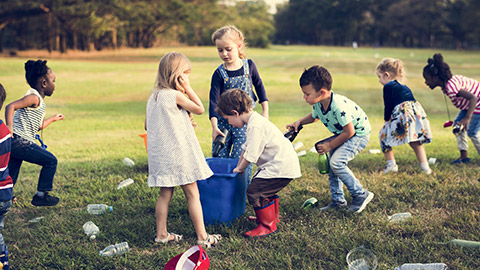
Acquiring an understanding of sustainability, environmental responsibility and how they can play a part in supporting the planet requires education. Educators assist children in gaining an understanding of sustainability concepts and how to uphold them. Why we should save our water and plant can be difficult for children to grasp, and educators must carefully consider how to effectively communicate this information so that children can understand and not just present it in a tokenistic manner.
Think
Consider the image of the herb garden – what would make it tokenistic, and what would make it a valuable embedded sustainable practice?
| Tokenistic | Embedded Sustainable Practice |
|---|---|
| A service has decided to undertake a new sustainable practice. The toddlers’ room decides to set up a herb garden. The herb garden is set up outside by the educators, with minimal assistance from the children who do not understand the concept of growing herbs. Once the seeds have been planted, the educators sporadically initiate discussions with the children about the herbs. After a few months, weeds have grown over the herbs, and the garden remains unkept. However, the service still highlights the herb garden in its sustainability policy and environmental plan. |
A service has been teaching its kindergarten children about vegetables and herbs and the lifecycle of growing plants. The kindergarten teacher and chef feel the centre is ready to create a veggie patch and herb garden that will be looked after by the kindergarten children and then used in the daily meals by the chef. Twelve months later, the kindergarten has a well-established vegetable patch. The children take turns each week to water the plants, turn the soil and pick herbs and veggies to be cooked in the service’s kitchen. |
Watch
To learn about embedding sustainable practices, watch this three-part series: Embedding Sustainable Practices by ECA Learning Hub on YouTube
Part 1:
Part 2:
Part 3:
Key focus areas
Environmental sustainability planning in children’s education and care will consider key areas of focus and associated contemporary sustainability practices and environmental responsibility:
| Key focus area | Definition | Sustainability practices |
|---|---|---|
| Biodiversity | Biodiversity is the variety of different animals, plants, fungi, and micro-organisms, such as bacteria, that can be found in any area. Each area has a different ecosystem depending on the location, e.g., marine, desert, rain forest or terrestrial. |
Building children’s awareness of the differences and variety of plants. Animals and micro-organisms. Encouraging children to care for their local environment to ensure a sustainable future. |
| Curriculum | The curriculum is all the interactions, experiences, activities, and routines planned and unplanned to promote children’s learning and development. | Ensure that a child-centred curriculum is in place to provide children with choice, to be involved in decision making and set goals and activities in the curriculum in building a curriculum about sustainability practices. |
| Eco-friendly material usage | Eco-friendly materials from their production and maintenance have a low environmental impact. |
Services use sustainable materials such as wooden toys and blocks, loose parts and recycled materials, e.g., food boxes, aluminium cans and toilet rolls. Services also use environmentally friendly cleaning products. |
| Eco-literacy for children | Children’s ability to understand and have knowledge of natural systems on earth. |
Children are provided with information to build their understanding that without a healthy environment, life is threatened. Buying books with environmental content and using practices that reduce the environmental impact. |
| Energy | Using energy wisely and being aware of energy conservation by using sustainable practices in childcare services. | Educators role model energy use and water conservation. Children are encouraged to save energy by turning off lights when leaving a room, closing doors to reduce heat loss or heat entering a room and reducing the use of single-use materials. |
| Water | Using water wisely to conserve it recognises it is a limited and valuable commodity. | Services use half flush toilets, save water by using rainwater tanks, and turning the water off when hand washing or teeth cleaning. |
| Natural environment | An environment that includes all-natural elements. It can be set up indoors or be an outdoor space. | Providing experiences using the natural environment enhances children’s attitudes to care for the environment and improves their development, problem-solving and creativity. |
| Recycling | Materials that can be reused and re-purposed to support sustainability. | Teaching children to care for the environment by recycling materials for art, craft, and imaginative play items. Sorting garbage and recycling plastics, glass, and paper. |
| Toxins | Materials used to manage pests and for cleaning can be toxic. | Services can select environmentally friendly cleaning products such as bleach, soap and water, vinegar and essential oils. Services use lower toxic chemicals to control pests and manage the environment to reduce pest infestation, e.g., removing standing water so mosquitos cannot breed and containing garbage to avoid rats, cockroaches and ants. |
| Upcycling | Using materials that would have been discarded and repurposing them into new products. | Services can transform original items into something better, for example, using plastic soft drink bottles as planters for a hanging garden, using old wooden plates as a stage or making leftover floor tiles into a mosaic tabletop. |
| Waste (including food waste) | Waste is items and materials thrown out into a bin that will be collected and disposed of in a landfill. In childcare, 30% of waste is food, and 25% is paper and cardboard. | Compost bins and worm farms for food waste can be used to improve the soil in the garden. Developing a recycling program for paper, plastics, and jars/bottles. Educating children and families to send food in that is not packaged and processed. |
Children as Partners
It is important to have discussions with children about sustainable practices and protecting their world: What do they understand? What are they already doing at home, and do they understand why it is being done?
Children usually have many ideas for how we could better look after our world.
Conversations about sustainability may be organised to take place during planned group discussions or intentional teaching, and spontaneous discussions may arise throughout the children’s time at the service – children may discuss their exploration of the world or experiments they have conducted.
You can gain an insight into the understanding children have about environmental issues by:
- Asking for feedback from families or the community about sustainability actions currently being taken that the child/children have been exposed to or a part of
- Organising projects for the children based on their interest in protecting and caring for their world
- Asking children for their sustainability planning ideas
It is vital to try to take advantage of a child’s natural interest when learning. Utilising ‘windows of opportunity’ can mean the difference between a child adopting certain practices because they understand their benefit and a child following practices just because they have been asked to do so.
Age-Appropriate Implementation
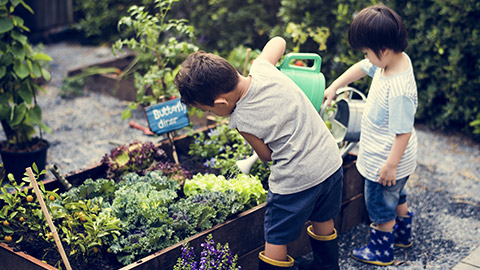
What is the children’s capacity to grasp the concepts of environmental responsibility? When children are young, they do not need to have conversations about or understand how using recycled paper for painting or making homemade playdough instead of using bought playdough is environmentally and economically sustainable. They can just be encouraged to engage in the practice. Nothing more is required. Much of what we do is learned from repetition and experience. For example, if we only ever use bought playdough, how will we know there is another or better way to obtain it?
As children develop their cognitive function, they will be better equipped to understand the impacts of what we do on the environment. However, it is still beneficial to implement environmentally responsible practices holistically within the curriculum (e.g., in planned experiences, spontaneous teachable moments and daily routines). Planned learning opportunities can support the beginning of understanding sustainability and environmental issues through:
- Helping children to understand one sustainability issue at a time (e.g., all focus is on saving water)
- Having children actively participate in the environmentally responsible practice (e.g., using suitable wastewater to water the gardens)
- Asking children questions about why we might implement certain practices, encouraging reasoning and thinking
- Explaining how certain practices better preserve the environment, e.g., explaining where water comes from, that there is a limit to useable water, and how we can use wastewater (which would otherwise be going down the sink) instead of new water for certain purposes
- Scaffolding children’s environmental knowledge with new areas for contemplation that they may begin to think about themselves
- Encouraging community and home practices that reflect and enhance the concepts being taught
- Teaching about and making connections to the sustainable practices utilised by Aboriginal and Torres Strait Islander communities
Activity 1D
Sustainable practices and environmental responsibility
Research current sustainable practices and environmental responsibility in early childhood service online.
List six (6) different experiences or tasks you could undertake with children at a service to assist their understanding of environmental responsibility.
Next, answer the following questions for one (1) of the experiences you listed:
- What age group does the experience best suit?
- What sustainable practice does the experience teach children?
- What language, words and phrases could you use to explain the concept of the practice and how it benefits the environment in a manner the children will understand?
- What questions might you ask the children to challenge their understanding?
- How could you implement this practice long-term?
- How could you encourage home practices that reflect this concept?
Ensure that you keep notes for future reference, as this information will support your assessment and professional practice.
Think
Review quotes about environmental responsibility at 50 Inspirational Quotes About Children and Nature from Mother Natured.
Choose a quote that resonates with you and consider why it stands out. Would this be an area you are more likely to engage children in because you feel strongly about it?
Using Experience to Foster Passion and Care

Directly connecting and involving children in nature and sustainable practices assist in building empathy for the environment.
Children need to be connected to the natural world to care for it. Developing a love for nature drives a passion for caring for and being responsible for it. Learning that things die if stepped on, not cared for, or not protected gives children a sense of responsibility for the survival of other living things. Spending time in nature – with the trees, plants, insects, and animals – gives children the opportunity to experience its wonder, and with that wonder, they can build care towards it.
Teaching children about the natural world should be treated as one of the most important events in their lives.Thomas Berry- Cultural Historian
Children as Active Citizens
Services can engage children in numerous ways to become environmentally responsible. Services can use strategies that improve children’s experiences and understanding of the natural environment and skills for environmental sustainability. Services can embed sustainability into all practical daily routines and practices.
Services can inform children of biodiversity and the benefits of nature for humans, including ideas such as:
- Develop gardens where children can grow their plants and contribute to their care. Include growing edible plants to demonstrate the farm-to-table cycle: Apples do not come from ‘the shops’ but from a tree – they are planted and nurtured.
- Involve children in food preparation to encourage children to be excited to eat what they have grown or made and to reduce wastage. Cooking provides an opportunity to discuss how food products can be made into meals.
- Give children opportunities for sensory exploration: Let them investigate, feel, and smell sand, mud, bark, stones, rocks, gum nuts, flowers, water, leaves, etc. and assist them in finding out the answers to any questions they ask.
- Do not limit exploration to the outdoors only. Implement opportunities to engage with natural materials indoors as well.
- Draw attention to and investigate and encourage interest in local fauna (e.g., butterflies, birds, and insects).
- When talking about bees, instead of teaching children to be afraid, remind them why we need bees and encourage them to wonder about what the bees are doing.
- Use compost or worm farms to help children understand how to minimise or use waste. A worm farm could be used to encourage children to think about how worms help the environment.
- Educators can role model desirable behaviours, such as saving water and paper and being curious and caring ‘out loud’ so the children can hear how you question and consider things too (e.g., saying ‘Oops! I better watch the ants there. I don’t want to squash them. They are very busy taking food home to their nest.’)
Environmental responsibility builds on the important foundation of children’s care, wonder and appreciation of the environment, and fosters accountability, agency, and advocacy.Rhonda Livingston- National Education Leader at ACECQA1
Resources
Create a sustainability portfolio for children by listing ways you can support their environmental education.
To help you with ideas for the portfolio, you may like to visit these links:
- Indigenous Australians and the Environment by Britannica Kids
- 10 Ideas for Teaching Kids About Sustainable Living from ABC Education
- 15 Sustainability Activities for Kids from the Living Montessori Education Community
- Sustainability from Stepping Stone Childcare
- Resources from the CERES School of Nature and Climate
Services will sometimes have tension between embedding environmentally sound practices and meeting the needs of parents and children to receive high-quality care. Services must balance the health and safety of children and economic realities.
Ethical dilemmas in sustainability practices can include:
- Resource allocation when staff are busy and throw food scraps in a bin rather than collect them and move them into compost later.
- Health and safety concerns for upcycled items, e.g., wooden pallets used in play that have rough edges and cause splinters.
- Environmentally friendly cleaning products may not clean as effectively as harsher chemicals.
- Ethical considerations when using food for craft, e.g., potato stamps or dried pasta jewellery, when some families and cultures may have limited access to food to eat and the service is using it for play.
Practices of Aboriginal and Torres Strait Islander Communities
Aboriginal and Torres Strait Islander people are intrinsically and spiritually connected to the earth, land, water, air, community, flora, fauna, and ecosystems.
Aboriginal and Torres Strait Islander people have long used practices to ‘read’ the environment and provide what nature needs for survival, which is ultimately needed for the survival of their communities. They have always used sustainable practices in their day-to-day management of the land and the interconnectedness and interdependence of all life forms. These practices include growing plants where needed to sustain environments, using fire for controlling ecosystems and knowing the appropriate times to fish, hunt and harvest crops. Aboriginal and Torres Strait Islander people consider natural regeneration, cycles, and patterns as ‘law’, and interrupting them is seen as an act against the laws of nature. They are always considering a sustainable concept known as the ‘survival of seven generations’.
We believe that country is not only the land and people, but is also the entities of waterways, animals, plants, climate, skies, and spirits. Within this, one entity should not be raised above another, as these live in close relationship with one another. So, People are no more or less important than the other entities.2
Karen Martin and Booran Mirraboopa2
Concept
The ‘survival of seven generations’ is a concept that focuses on the decisions made in the present (especially regarding the world’s energy, water, and natural resources) and ensuring the decisions support the sustainability of life seven generations into the future.
Aboriginal Sustainability Concepts
| Mother Earth as a Life-Giving Force | In many Aboriginal languages, ‘Mother Earth’ is depicted as a living person, which means that if we desecrate her, she may no longer be living. |
| Laws of Nature | There is a time and season for all life-sustaining activities. For example, care is taken to ensure the animal laws are upheld, such as not killing animals during their reproductive cycles to support their ongoing sustainability as a species. |
| Life-Sustaining Elements of the World |
Air: The essential element of life |
| Interrelationships and Interconnectedness | Do not take life for granted. Each living thing needs other beings and resources for survival and has its role in our planet's life. |
Watch
Watch the video on Aboriginal and Torres Strait Islander people’s perspective on sustainability: Indigenous Perspective on Sustainability from ABC Education 3:29 minutes
Alert
We would like to advise Aboriginal and Torres Strait Islander readers to be aware that this Learner Guide may contain images of deceased persons or provide links to content that may contain names, images, voices, or videos of deceased persons.
Resource
The Little Green Steps program promotes and supports sustainability in early learning services. Read about what they do here: Little Green Steps: In Your Childcare Centre from Little Green Steps.

Action starts with a service’s philosophy, policies, procedures, educator passion, and, of course, the National Quality Framework, which reminds us that children are to be encouraged to be responsible for their world and taught to be active citizens.
Quality Area 3: Physical Environment of the National Quality Standards aims to ensure that a child’s physical learning environment is suitable and safe and promotes a wide range of opportunities to promote children’s learning and development. Standard 3.2.3 requires that the service displays care for the environment and aims to develop environmental responsibility in children.
In the Early Years Learning Framework (EYLF), children’s environmental education is supported through:
- Outcome 2: Children are connected with and contribute to their world
- Outcome 2.1: Children develop a sense of belonging to groups and communities and an understanding of the reciprocal rights and responsibilities necessary for active community participation.
- Outcome 2.4: Children become socially responsible and show respect for the environment.
The Education and Care Services National Regulations (2011) set out the underpinning requirements for physical environments under Part 4.3. This includes fencing, furniture, toilet facilities, and indoor and outdoor space. Regulation 113 sets out the requirements of Outdoor space – the natural environment.
Standards, policies, and procedures on environmental responsibility for the service will link to the standards in the National Quality Framework related to:
- Educational programs and practices
- Health and safety
- The physical environment.
Policies could also include a sustainability policy that guides the service's actions towards being environmentally responsible.
To meet the requirements of Quality Area: 3.2 – environmental responsibility, a service will have an environmental policy to set out its beliefs and actions to achieve this standard. The policy will have a purpose statement outlining its commitment to the environment and sustainability practices. The policy will also include implementation actions that the service will take.
You can review the ML7 Sustainability Policy and Procedure for Little.Ly Early Learning Centre by logging into:
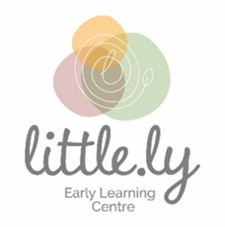 |
Little.ly Early Learning Centre, a simulated childcare centre. Access information and policy and procedure documents associated with Little.ly. This can be done by logging in to the Educator Hub on Little.ly's website with the following credentials:
|
Environmental responsibility builds on the important foundation of children’s care, wonder and appreciation of the environment and fosters accountability, agency, and advocacy.Rhonda Livingston, National Education Leader at the ACECQA3
Resource
Read about encouraging environmentally responsible practices in children at this link: More Than a Worm Farm: Supporting Children to be Environmentally Responsible from ACECQA We Hear You.
The United Nations Convention on the Rights of the Child, Article 294 reminds us that:
Parties agree that the education of the child shall be directed to:
- (d) The preparation of the child for responsible life in a free society in the spirit of understanding, peace, tolerance, equality of sexes, and friendship among all peoples, ethnic, national, and religious groups and persons of indigenous origin
- (e) The development of respect for the natural environment.
Activity 1E
Environmental responsibility in a service
Part 1
Visit the Little.ly website and review Little.ly Early Learning Centre’s philosophy and relevant policies and procedures, and answer the following questions:
- How does the centre incorporate environmental responsibility into its philosophy, policies, and procedures?
- How might the centre’s environmental responsibility be demonstrated?
Part 2
Read the information on Education for Sustainability from the University of Adelaide.
Then answer these questions:
- What resources would you consider eco-friendly? Why?
- How can you source environmentally friendly resources?
Download and complete the template table (which includes example entries) with the details of eco-friendly resources that a service could utilise:
Environmental Responsibility Area template
Reviewing Environmentally Responsible Practices
Sustainable practices should link to the services philosophies and practices. Services have processes to review sustainability practices and ensure they align with the policies, procedures, and programs. These processes may include:
- Staff/room meetings/discussions
- Critical reflection activities by educators
- Professional development opportunities for sustainability
- Reviewing existing sustainability programs
- Comparing the services sustainability practices against currently accepted practices in environmental responsibility
- Gathering feedback from discussions with children and their families and communities
- Conducting surveys to invite family and community contributions and ideas.
Tools can be used to review current service practices and to identify improvements:
- A quality improvement plan
- An audit of sustainable practices quarterly/annually
- A formal review of the service philosophy, policies and procedures against sustainability practices and goals. Stakeholders can be involved in the review and assist in identifying changes and improvements.
The results of these actions and reviews will inform needed changes and support improvements to the service’s environmental responsibility plan (ERP).
Resource
You can download this Environmental Responsibility Area Review template to review sustainability practices in a service.
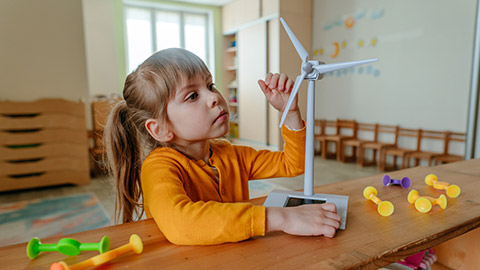
An environmental responsibility plan (also called a ‘sustainability plan’) can take any form. Its main objective is like a Quality Improvement Plan (QIP) in that it records what you are doing to support a concept, why the concept is important to incorporate, who might be responsible for incorporating it (e.g., a sustainability team) and how they plan to implement new ideas.
Some ideas can be costly or take time to implement, so practicality matters when considering implementation. If progress is demonstrated, the service will know they are heading in the right direction. Making short- and long-term goals for environmental responsibility is important – you will need to consider what is possible now, in six months, a year or further down the line. For example, many services plan to implement one new environmentally responsible practice every year or every six months.
Example
Take a look at two universities’ sustainability plans:
- Sustainability Plan 2017–2020 from the University of Melbourne.
- Environmental Sustainability Plan 2019–21 from the University of Sydney.
Activity 1F
Environmental Responsibility Plan
Revisit the Little Green Steps program you read about in section 1.3 of this unit. You can also find out some more information about another implemented program.
Develop an Environmental Responsibility Plan to support the policies, practices, and findings of the audit checklist – consider this a guide to goals you might want to set. Your ERP will typically include:
- Commitment statements (goals)
- Timelines
- Review dates
- A comments or improvements section
Review this example ERP goal and, using the template add three (3) commitments to your plan, and document key information about the commitments.
Download the template and complete the table:
Environmental Responsibility Plan template
| Environmental Responsibility Plan | |
|---|---|
| Commitment | Minimise water wastage |
| Why it is needed | To teach children about local and worldwide sustainability and saving water for future generations (reflections and action). To save on water costs |
| Who will implement it |
|
| Resources required |
|
| Leader/responsible person | Lead: Shizuko Team: Danni, Yinki, Brock, Alma |
| Timeline | Implement and establish - three months |
| Review date | Review Date 15th March |
| Comments/improvement areas |
The service could plant gardens, which can support the needs of local fauna; trees, which will provide shade; and plants that produce herbs and vegetables, which can be utilised in the service kitchen. The service could use appropriate wastewater for the vegetation. Feedback/improvement: Water was often not saved due to the stakeholders forgetting to do it throughout the busy day. Implement strategies for reminding all stakeholders to save wastewater every day. |
Involving Stakeholders
All stakeholders should have the opportunity to contribute to the environmental responsibility plan and should be encouraged to engage and participate in the goals around the centre and even in their homes.
Strategies to involve stakeholders can include:
- Ensure, firstly, that families are informed – promote the relevant information everywhere! Inform families why it is important to the world and all people, especially children, to be environmentally conscious.
- Encourage children and families to carry on environmentally responsible actions outside the service, e.g., recycling, composting, re-using, up-cycling, and becoming involved in community sustainability projects.
- Be passionate and know the answers to common questions. People want to follow passionate people – it is contagious! Promote sustainability information and practices and show them the planet needs their help and participation to make the greatest difference.
- Share information regularly about how everyone can support goals anywhere in the community or at the service.
- Provide updates to families and other staff on how the children have supported and embraced the implementation. Encourage children to share information they learn with others.
- Suggest sustainable practices that are practical and easy to implement. Start with the basics – do not ask everyone to start their own worm farm at home on week one.
- Frame environmental responsibility as a ‘code of practice’ to be adhered to – this will demonstrate how seriously a service is taking its environmental responsibility.
- Encourage engagement with literature, songs, activities, practices, and ideas at home, in the community and in the service that promote sustainability concepts further.
- Build a sustainability team of stakeholders to take plans and apply them in practice.
- Appoint children as ‘energy officers’ to monitor practices and encourage others to adopt energy-saving actions, e.g., using water play to water the garden when the activity is completed or being the designated person to take the food scraps to the compost bin after lunch.
Key stakeholders should also be involved in developing the environmental responsibility plan (ERP). Using stakeholders can include:
- Children can be invited to contribute ideas about areas of focus to promote their engagement in sustainability
- Families can be part of the sustainability team and contribute to environmental audits and improvements that can be made to build more sustainable practices. Families can also review sustainability policies.
- Educators and management in the service can develop and review sustainability policies and procedures. They can be involved in environmental audits and include areas of improvement in the ERP.
- Community stakeholders can include members of the local community, First Nation people and elders, community services and facilities, e.g., libraries. The community can be invited to input into the plan as well as support strategies that are identified. For example, a local charity shop may receive recycled clothing and goods that the service collects, dropping cans for cash to the local scout or girl guides group.
Reviewing the Environmental Responsibility Plan
All plans require review to ensure things are working and being implemented appropriately. A review will consider if a plan is not working or being implemented, why, what improvements can be made and whether you need to start with something simpler. The review will involve an investigation into the level of engagement that stakeholders have in the ERP.
You will need to consider whether a goal has been met and whether you could scaffold or build upon the results. Perhaps a service could not get resources, equipment, or information in time to meet the timeline, or it is still waiting for funding. Perhaps there has been insufficient buy-in from the children and families.
Whatever the review, good or bad, document the results, and return to the documentation to ensure progress is being made. Documentation can occur using digital media, such as a digital device, to share information. Technology can be used, such as computers and programs in MS Word. In addition, reports on outcomes could be recorded in a spreadsheet to allow the calculation of quantitative data such as Excel. Using digital media allows reports and plans to be created, edited, and stored in a digital form.
You can ask the children or their families to help review goals or commitments and express how they feel about the progress: Is there learning happening; are they passionate about sustainable practices; are they genuinely taking them on board; do they want more information or ideas for sustainable living?
The review of ERP and sustainability practices can include evaluation methods, such as:
- Qualitative methods include observing and describing practices and using open-text questionnaires. Services can review environmentally friendly cleaning products to identify how ‘green’ the ingredients are and if they are working well
- Quantitative methods gather data and statistics to measure outcomes (often numerical data). Services can examine statistics, such as the quantity of paper saved, food waste reused, and the percentage of environmentally friendly cleaning products used and share the data with stakeholders.
The results of the review and actions achieved in the ERP should also be shared with the supervisor. The implementation team can use the report they completed to provide feedback to management about the progress of sustainability objectives. Management will be accountable for reporting these outcomes to the board or management committee. The service will also use the results during service reviews and ratings as they link to the national quality framework.
Activity 1G
Review your Environmental Responsibility Plan that you developed for Learning Activity 1F.
Review your commitment and consider improvements that could be made:
- How might these improvements be implemented?
- When will it be practical to implement the improvements?
- Who will be most responsible for the implementation?
- How will you know the improvement has worked and that the children have understood the change?
Ensure that you keep notes for future reference, as this information will support your assessment and professional practice.
Successful Change
The success of embedding sustainability actions can be supported by having a change management lens on the implementation strategy. Services are well advised to incorporate the principles of change management to ensure the success of their ERP.
Change initiatives can be most successful when the service uses core change management principles of:
- Understanding the benefits of the change (and what are the adverse outcomes if the change did not occur)
- A planned approach to the change
- Carry out the plan and implement the change (providing training as needed)
- Communicate the plan to staff so it is relevant to them, and they understand and embrace the change
- Measure the performance, identify what is not working and implement actions to fix these
Barriers can include change resistance, lack of time, breaking old habits, questions about the value of sustainability, and management’s failure to consult and communicate the benefits of the change and the services culture when encountering change.
Drivers for behavioural change include adequate consultation and communication where input is welcomed and incorporated into the change initiative. Services can also share data on progress and celebrate the wins.
While service may endeavour to have all staff on board and participating in sustainable practices, creating an implementation team with those most passionate and knowledgeable about the practice is vital when developing and embedding practices. Using people with a sphere of influence will allow their passion and enthusiasm to encourage others to view sustainability differently and create a positive culture within the service.
Remember, when undertaking a new sustainable practice and embedding it into your service, you should not rush or put staff under pressure. Ideally, a service will implement one or two new sustainable practices within a year to focus on embedding and perfecting one practice before developing another. This will ensure practices are properly embedded in the service and not tokenistic.

